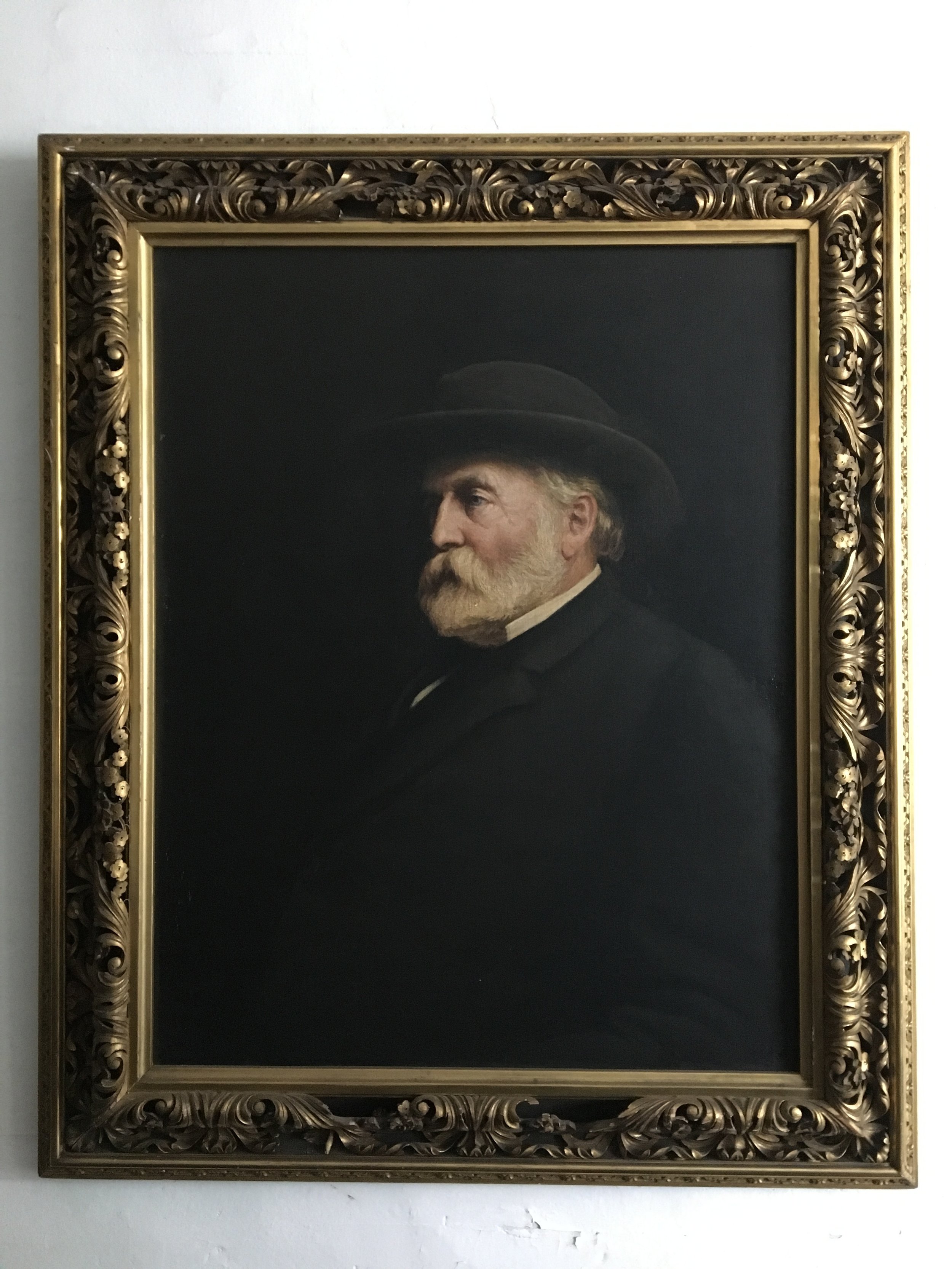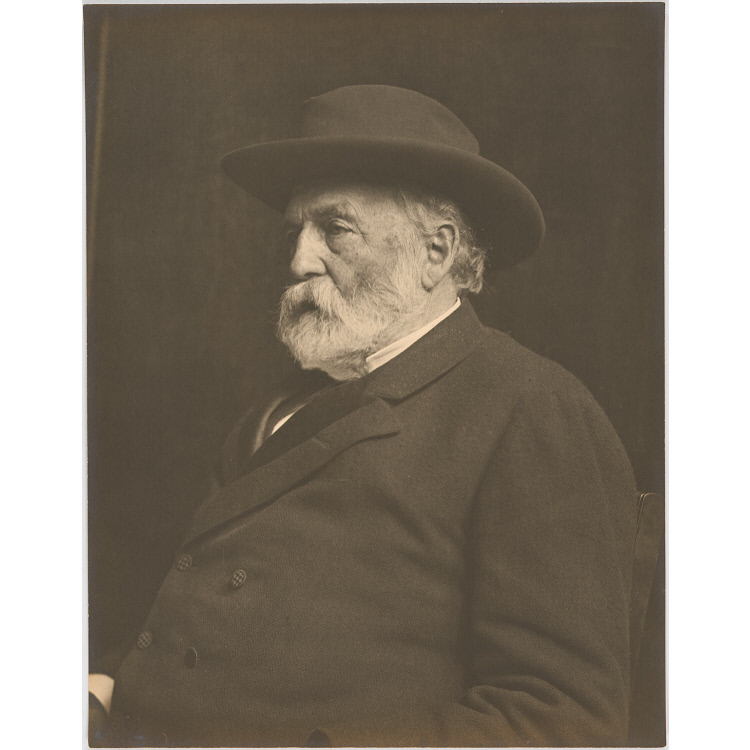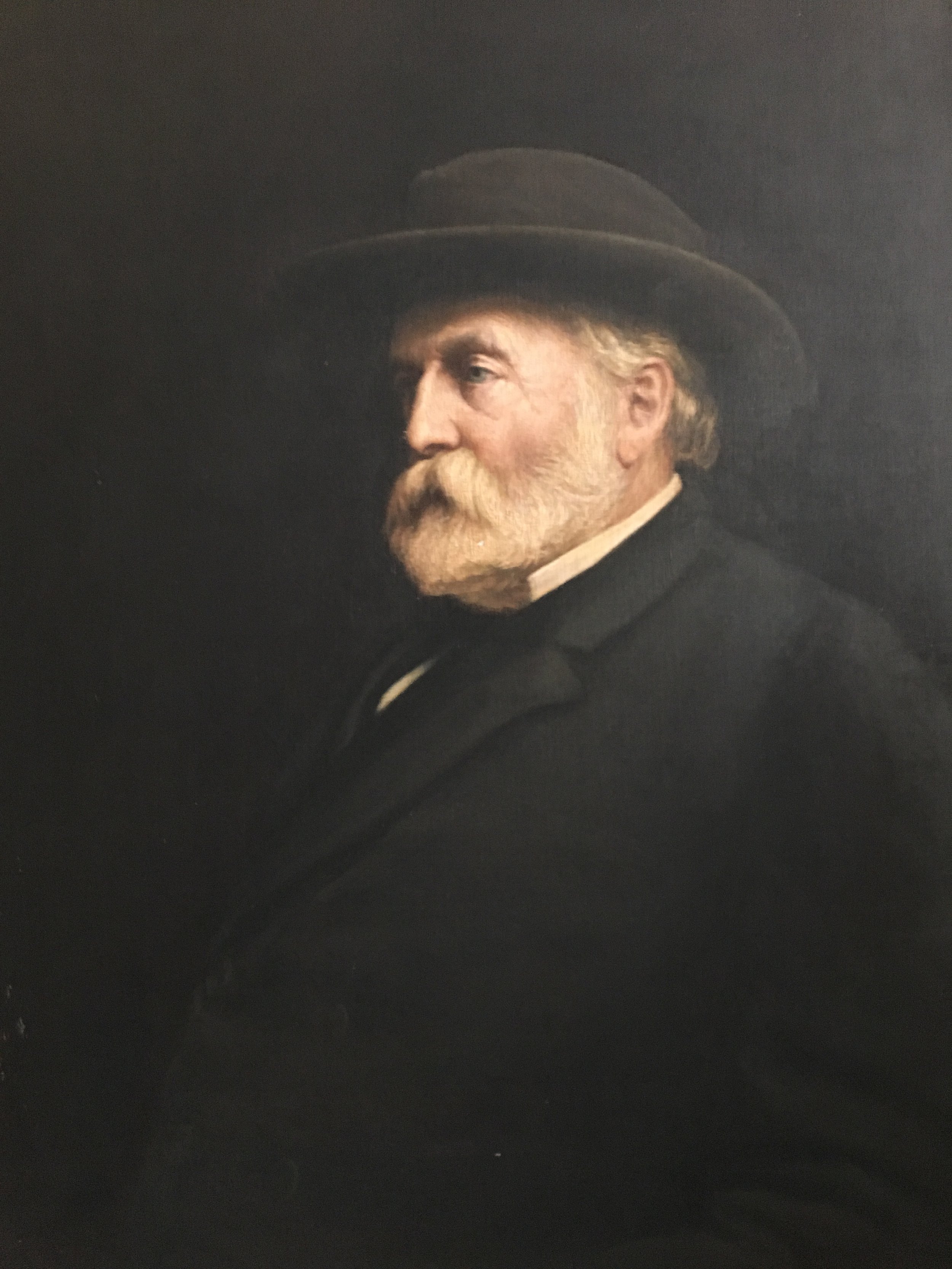Collis, The Huntington Family Railroad Tycoon



When walking up the central stairwary of the Porter-Phelps-Huntington Museum, it’s impossible to miss the prodigious oil portrait on the left wall. With a width of twenty-seven inches and a height of thirty-five inches, the painting depicts a man with white hair, beard, and mustache. His light features are a stark contrast against the dark black suit jacket and hat which blend into the dark background. At a glance, there is no doubt that the painting is of someone significant.
The man in the painting is Collis Potter Huntington, also known as one of the Railroad Tycoons. Collis is the second cousin once-removed of Dan Huntington. Both are direct relatives of Samuel Huntington, a signer of the Declaration of Independence as governor of Connecticut and the previous President of the Continental Congress. According to the museum’s inventory card, the painting was commissioned by Collis’ sister, Ellen Huntington Gates (a hymnist and poet), while she was in Paris. It is unclear who the artist was, however, there is a photograph in the collection of the National Portrait Gallery, Smithsonian Institution that was most likely used by the artist to copy and create the painting.
Collis was an entrepreneur that was partially responsible for the success of the Central Pacific Railroad. Huntington worked alongside his fellow magnates Leland Stanford, Mark Hopkins Jr., and Charles Crocker. Together, they were popularly known as the “Big Four” or “The Associates”. The four collectively invested in Theodore Judah’s engineering design, the Central Pacific Railroad (1861), which then became the first transcontinental railroad in the United States.
In 1862, President Abraham Lincoln signed the Pacific Railway Act, allowing for the Central Pacific to move east from California. The tracks were created at a very rapid rate and at a very low pay wage towards the thousands of Chinese laborers in order to rival the Union Pacific Railroad’s thousands of Irish laborers. (Learn more about the Chinese and Irish laborers’ history here: http://ocp.hul.harvard.edu/immigration/railroads.html )
( Click to view full screen) Map of the central portion of the United States showing the lines of the proposed Pacific railroads, via the Library of Congress.
The railroad, initially, started from both sides of the country. The Union Pacific Railroad started in Omaha, Nebraska in 1865 and headed westward. The Central Pacific Railroad began laying down track in Sacramento, California in 1863 heading east. Their trek was incredibly foreboding because they had to go through the Sierra Nevada mountains, which included using a great number of explosives. The Union Pacific was mostly composed of Irish laborers and Civil War veterans, and they were often battling Native American tribes throughout the Rocky Mountains. Both tracks met in Promontory, Utah in May of 1869 and added up to be nearly 1,800 miles long. From there, the railroad had expanded, and the Southern Pacific Company acted as a holding company, before merging with the Central Pacific in 1959.
In addition to the railroad business, Collis helped to develop the Newport News Shipbuilding and Drydock Company, as well as forming Newport News into an independent city. The famed Huntington Library, Art Collections, and Botanical Gardens in San Marino, California was created in his honor by his nephew, Henry E. Huntington. His step-son, Archer M. Huntington, created the Hispanic Society of America in Manhattan, New York.
If you are interested in reading more about this story, as there is so much more to tell, please check out the sources below.
SOURCES:
- The Huntington Family in America: Third Supplement to the Genealogical Memoir of 1915. Huntington Family Association, 1971.
- “Collection Inventory.” Collis Potter Huntington Papers, Syracuse University Libraries Special Collections Research Center, library.syr.edu/digital/guides/h/huntington_cp.htm.
- Union Pacific Railroad at Council Bluffs, Iowa, dated March 7, 1864 (38th Congress, 1st Session SENATE Ex. Doc. No. 27).
- Howard, Robert The Great Iron Trail. New York: G.P. Putnam's Sons, 1962. pg. 222
- “Immigration, Railroads, and the West.” Open Collections Program: Contagion, The Yellow Fever Epidemic in Philadelphia, 1793, ocp.hul.harvard.edu/immigration/railroads.html.
- “Map of the Central Portion of the United States Showing the Lines of the Proposed Pacific Railroads.” Apple Computers: This Month in Business History (Business Reference Services, Library of Congress), Victor, www.loc.gov/resource/g3701p.rr000150/?r=0.131,0.002,0.643,0.309,0.